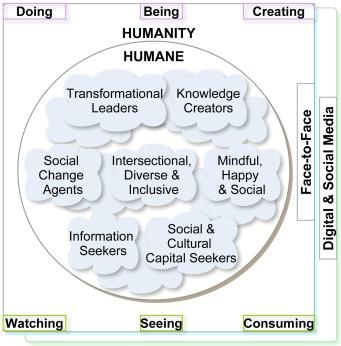How Wearable Technologies Are Revolutionizing the Future of Education
In recent years,wearable technologies have become ubiquitous,transforming industries from healthcare and fitness to gaming. Now, these innovative devices are finding their way into classrooms, fundamentally reshaping the educational landscape. With advancements in smartwatches,augmented reality (AR) glasses,and fitness trackers,both students and educators are witnessing the revolution of learning experiences. In this article, we’ll explore how wearable technology is revolutionizing education, delve into real-world case studies, and provide practical tips for effective classroom integration.
Understanding Wearable Technologies in Education
Wearable devices refer to electronic gadgets that can be comfortably worn on the body. in the context of education, these include:
- Smartwatches and fitness trackers — for managing schedules, health-tracking, and real-time notifications.
- Augmented Reality (AR) glasses — overlaying digital facts onto the physical world, enabling immersive learning experiences.
- Virtual Reality (VR) headsets — transporting students to interactive, three-dimensional environments.
- Smart clothing and biosensors — tracking physiological data to enhance personalized learning and well-being.
These wearable technologies are not just futuristic gadgets; they are practical tools that can address current challenges in education, from improved engagement to personalized learning paths.
Key Benefits of Wearable Technologies in Education
The future of education is being shaped by the widespread adoption of wearables, offering several transformative benefits:
1. Enhanced Engagement and Motivation
- Interactive lessons using AR glasses or VR headsets turn abstract concepts into tangible experiences, making learning more memorable.
- Gamification through smartwatches motivates students to participate actively and keep track of goals and progress.
2. Personalized learning Experiences
- Biosensors embedded in wearables provide real-time data about a student’s cognitive state and well-being.
- Teachers can tailor lessons based on individual attention spans, stress levels, and learning styles.
3. Seamless Collaboration and Dialogue
- Smartglasses enable students to share their real-time perspectives with peers and educators,fostering collaboration even remotely.
- Instant messaging on smartwatches ensures timely feedback and support.
4. Real-World, Experiential Learning
- AR apps can transform field trips, overlaying historical facts and interactive challenges onsite.
- Vocational education is enhanced with wearable simulations for medical students, mechanics, and more.
5. Inclusive and Accessible Education
- Wearables can provide real-time speech-to-text for the hearing impaired and translate spoken instructions into multiple languages.
- Smart wearables support students with special needs, offering gentle reminders, visual cues, and other adaptive aids.
Real-World Case Studies: Wearable Technology in Action
Let’s look at some inspiring examples of wearable technologies transforming classrooms and campuses worldwide:
Case Study 1: Google Glass in STEM Education
Several universities piloted the use of Google Glass in STEM programs. Students conducting chemistry experiments used AR overlays to access step-by-step instructions, interactive safety guides, and instant data logging, minimizing distractions and errors while maximizing engagement.
Case Study 2: VR Headsets for History Lessons
In Los Angeles, history teachers have introduced VR field trips that transport students to ancient Rome or the pyramids of Giza. This immersive approach not only increases curiosity but also boosts retention rates, as students become part of history themselves rather than passive spectators.
Case Study 3: Fitness Trackers in PE Classes
primary schools in Finland outfitted students with fitness trackers to monitor physical activity. Teachers use the collected data to personalize exercise routines and encourage healthy habits, leading to improved student wellness and reduced absenteeism.
Practical Tips for Integrating Wearable Technology in Education
To ensure triumphant adoption of wearable technologies in the classroom, consider these expert recommendations:
- Define clear educational objectives: Align device usage with learning outcomes, rather than using wearables for novelty.
- Prioritize data privacy: Implement robust data protection policies and gain parental consent when appropriate, as wearables can collect sensitive personal information.
- Provide thorough training: Teachers should receive hands-on training to fully utilize wearable features for instruction and assessment.
- Encourage responsible use: Develop guidelines for acceptable use to minimize distractions and foster digital citizenship.
- Start small,scale up: Pilot programs and gather feedback before rolling out wearables on a larger scale.
First-Hand Experience: educators and Students Speak
“The introduction of virtual reality headsets in my social studies class has opened up a new world of possibilities.My students are more engaged and eager to learn than ever before.”
– Sarah Thompson, Middle School Teacher
“Using a smartwatch to track my daily steps during P.E. made exercise fun, and I love receiving badges for reaching new milestones!”
– Alex, 7th Grade Student
These testimonials highlight the positive impact wearable technologies are already having on engagement, motivation, and student well-being.
Future Trends: Where Are Wearable Technologies in Education Heading?
The future of wearable technology in education looks promising, with several trends on the horizon:
- AI-driven Analytics: Advanced algorithms will provide deeper insights into student learning patterns and emotional states, further personalizing instruction.
- expanded AR/VR Content Libraries: Content creators will develop more subject-specific, standards-aligned immersive lessons for all grade levels.
- Cross-Device Integration: Seamless syncing between wearables, tablets, and learning management systems will make information access effortless.
- Greater Focus on Accessibility: Innovations will continue making education more inclusive, supporting students with various learning needs through real-time translations and adaptive feedback.
As adoption grows, ongoing research and collaboration between educators, technologists, and policy makers will ensure wearables empower—not hinder—learning success.
Conclusion: Embracing the Wearable Revolution in Education
As we look to the future, wearable technologies in education offer students unprecedented opportunities for engagement, personalized learning, and collaboration. By harnessing the unique capabilities of these smart devices, schools can bridge gaps, promote inclusivity, and prepare students for an increasingly digital world. The key to success is thoughtful implementation: clear goals, robust privacy protections, and a focus on meaningful learning outcomes.
Ready to embrace the revolution? Start small, stay informed, and empower your students to thrive in tomorrow’s wearable-enhanced classrooms.

